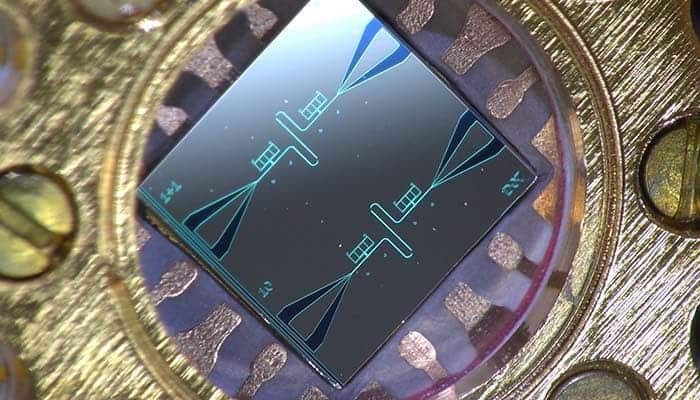Finnish physicists at Aalto University have demonstrated a novel refrigeration method for quantum computing devices. Quantum computers are extremely sensitive and error-prone. The new method could significantly make quantum computations more stable and help usher in the much-awaited age of quantum computing.

Quantum computers promise to revolutionize computing by disrupting the industry at least on the same scale as the introduction of the transistor in the 1950s. Owing to its radically different approach to computing based on qubits instead of bits, a quantum computer can solve equations that now take years to solve on classical computers in a matter of seconds or virtually instantaneously.
Classical computers, like your smartphone or laptop, work with a fundamental unit of information called a ‘bit’ whose value can either be ‘1’ or ‘0’. A quantum system, however, can assign information the values ‘1’, ‘0’ or both at the same time. It’s akin to saying a switch is both on and off at the same time which in day to day life makes absolutely no sense, but in the quantum domain, few things are reasonable from our perspective. This ambiguity is possible due to the superposition of states and if we could leverage this quantum phenomenon information can be computed in parallel. Two qubits can perform operations on four values, three on eight values and so on in powers of two — they can do that simultaneously, whereas traditional bits have to assume a position. As such, a quantum computer could be billions of times faster than a normal silicon computer built on a von Neumann architecture.
But despite what you might have heard from companies like D-Wave, IBM or Google, there is officially no working, practical quantum computer yet. Before that happens, a lot of different pieces need to come together to solve a pretty complex puzzle.
It’s all in the spin
Electrons have both a charge and spin. It’s the spin which determines if an atom can generate a magnetic field and it’s the spin that can be used as a qubit where 0 and 1 correspond to spin-up and spin-down quantum states, respectively. During superposition — an essential characteristic of a quantum computing system — the electron spins get disordered which results in loss of information, something physicists called decoherence.
An electron’s spin lifetime is affected by lattice vibrations in a material and the neighboring magnetic interactions. Typically, we need an electron spin lifetime of at least 100 nanoseconds to achieve quantum computing. Cooling the atoms helps increase the spin lifetime which is why you see attempts at quantum computers chilled down to near absolute zero, at -273 degrees Celsius. For instance, D-Wave cools its machines down to 20mK or only a fraction of a degree above absolute zero. To achieve this, D-Wave has to build a huge refrigeration system that takes up the bulk of its machines’ volume, as pictured below.

Mikko Möttönen and colleagues at Aalto University have devised a novel solution for the qubit cooling problem.
“I have worked on this gadget for five years and it finally works!” rejoices Kuan Yen Tan, who works as a postdoctoral researcher in Möttönen’s group.
The tiny gadget is a refrigerator that exploits the quantum tunneling effect in which an electron can pass through an obstacle because it can function both as a wave and a particle. Essentially, an electron in certain conditions can ‘blink’ passed a barrier if it has enough energy. In our case, the barrier was a two-nanometer-thick insulator but Möttönen and Tan gave the electron less energy to tunnel. To compensate, the electron captured the missing energy required for tunneling from the nearby quantum device — a qubit-like superconducting resonator which the researchers from the Finnish university assembled.
The cooling can be amplified or switched on/off by adjusting the external voltage. “Our refrigerator keeps quanta in order,” Mikko Möttönen sums up.
Möttönen now wants to apply their work to actual quantum qubits. They also want to lower the minimum temperature achievable and make it switch on/off faster, something very important considering every qubit has to be reset in the beginning of the computation. And, by the way, Möttönen and Kuan are two very cool scientists *no pun intended. Just check out their presentation video to see what I mean.






